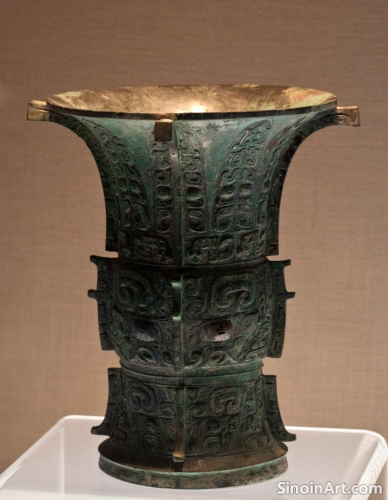The Influence of Tang Dynasty Culture on the Design and Decoration of Bronze Ware
|
While the Shang and Zhou dynasties are often seen as the peak of bronze production, the Tang Dynasty (618-907 CE) also contributed to the art form, developing a distinctive style characterized by elegance, refinement, and new decorative techniques. The Tang style often emphasized a more fluid and natural approach, in contrast to the more rigid structure of earlier bronze pieces. The style of the bronze produced during this period reflects a broader cultural and aesthetic shift.  Tang Dynasty bronze ware often incorporated new forms, including those inspired by foreign trade and cultural exchange with other parts of Asia. This introduction of new ideas helped to transform the visual vocabulary of Chinese art. The cross cultural influence helped to give Tang bronze its unique and distinctive character.  The decoration on Tang bronze, influenced by the art of the period, emphasized flowing lines, naturalistic motifs, and elegant figures. The detailed designs and intricate patterns demonstrate the technical mastery of the bronze workers of the time.  The shift away from purely ritualistic objects was also a key feature of the period, with new forms and objects being created for practical or decorative use, and for the enjoyment of the ruling class. The use of bronze moved beyond purely religious purposes and came to be used in daily life and as status symbols. The influence of the Tang Dynasty on bronze ware helps to showcase the ongoing evolution of Chinese art, highlighting how new styles and approaches can blend traditional techniques with innovative design practices. The style and approach of the Tang era helped to shape future generations of artistic expression. |
Tag : Tang Dynasty bronze, Chinese art, decorative patterns, bronze evolution, design history
Related information
- The Enduring Appeal of Chinese Bronze Ware: A Synthesis of Art, History, and Craftsmanship
- Bronze Ware and Ancient Chinese Concepts of the Soul: Its Journey, Protection, and Continuity
- Bronze Ware and the Development of Ancient Chinese Metallurgy: Innovations and Techniques
- The Enduring Appeal of Chinese Bronze Ware: Timeless Art and Cultural Legacy
- Regional Variations in Chinese Bronze Ware: Exploring Cultural Diversity
This article reflects on the enduring appeal of Chinese bronze ware, emphasizing its synthesis of technical mastery, artistic beauty, and historical significance, and its continued ability to captivate and inspire scholars, artists, and enthusiasts across the globe.
This article explores the connection between bronze ware and ancient Chinese beliefs about the soul, highlighting the use of bronze objects to guide, protect, and sustain the soul on its journey into the afterlife, and revealing the spiritual dimension of these material possessions.
This article explores the development of ancient Chinese metallurgy in relation to bronze ware production, highlighting the discovery and use of different metals, the creation of alloys, the development of casting techniques, and the technical achievements of ancient metalworkers.
This article emphasizes the enduring appeal of Chinese bronze ware, highlighting its timeless beauty, its blend of function and symbolism, its ability to connect us with the ancient world, and the importance of continued study and preservation for future generations.
This article explores the regional variations in Chinese bronze ware, highlighting how different regions developed their unique styles, forms, and techniques, reflecting the diverse cultural landscape of ancient China.